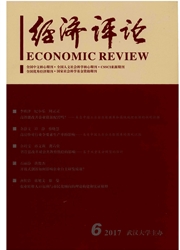

 中文摘要:
中文摘要:
"新丝路"战略为西部省区开放和跨越式发展提供了契机,但这一战略的实施亟须金融产业支持。通过金融排斥测度视角分析新丝路沿线省区金融发展程度,选取了五个指标来建立金融排斥评估体系,使用该体系定量评估2008年~2014年的沿线省区金融排斥情况。通过指标聚类发现各省区之间金融排斥程度存在较大的差异,其中广西、贵州和重庆排斥程度最高。进一步,采用面板数据模型分析民族地区金融排斥的影响因素,结果显示:地区收入和社会固定资产投资水平是降低金融排斥的主要因素;民族政策和政府干预影响金融排斥程度。
 英文摘要:
英文摘要:
The strategy of new silk road has offered an opportunity for the opening up and leap-for ward development of provinces in Northwest China, but the inplementation of this strategy is in great need of the support of financial industry. Through measurement perspective of financial exclusion, the article analyzes the financial development level of provinces along the new silk road, chooses five inde- xes to build up the evaluation system of fiancial exclusion, and uses this very system to conduct quan- titative evaluation of financial exclusion of the provinces along the Road from 2008 to 2014. Through index clustering, the article finds that there are great differences of financial exclusion degrees among these provinces; Guangxi, Guizhou and Chongqing are at the top of the list. Moreover, using panel data model, the article analyses the influence factors of financial exclusion in ethnic areas. The find- ings show that regional income and investment level of social fixed assets are the main factors to de- crease financial excluion, and ethnic policies and government interference influence the level of fiancial exclusion.
 同期刊论文项目
同期刊论文项目
 同项目期刊论文
同项目期刊论文
 期刊信息
期刊信息
